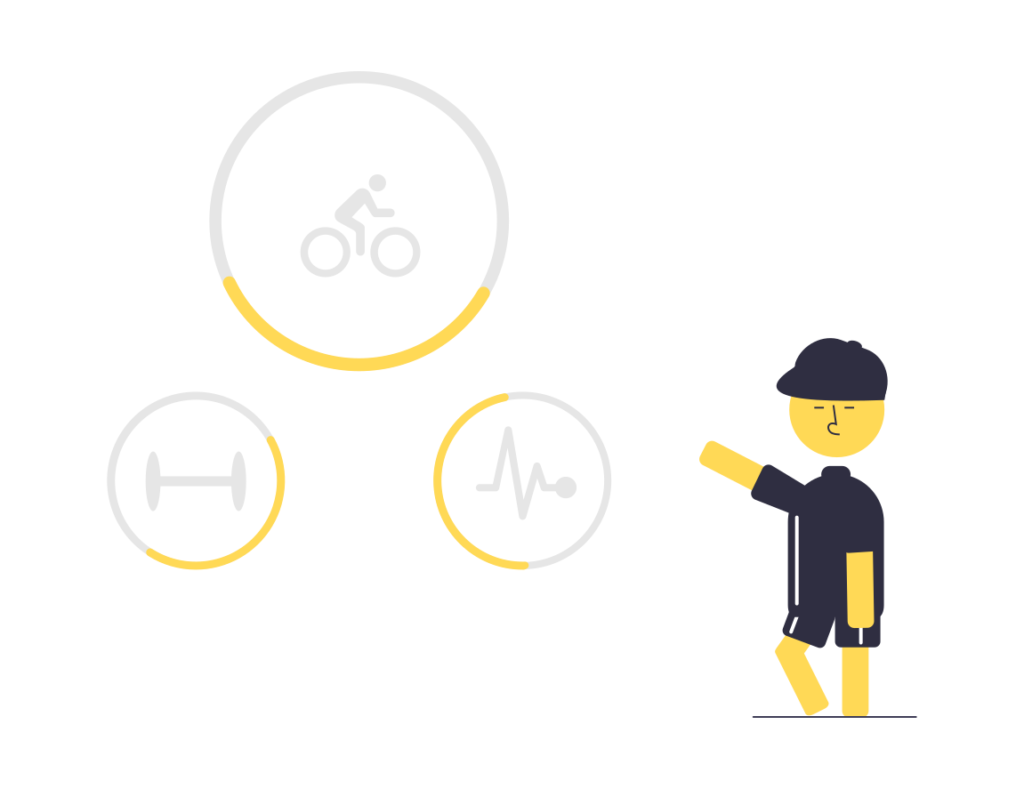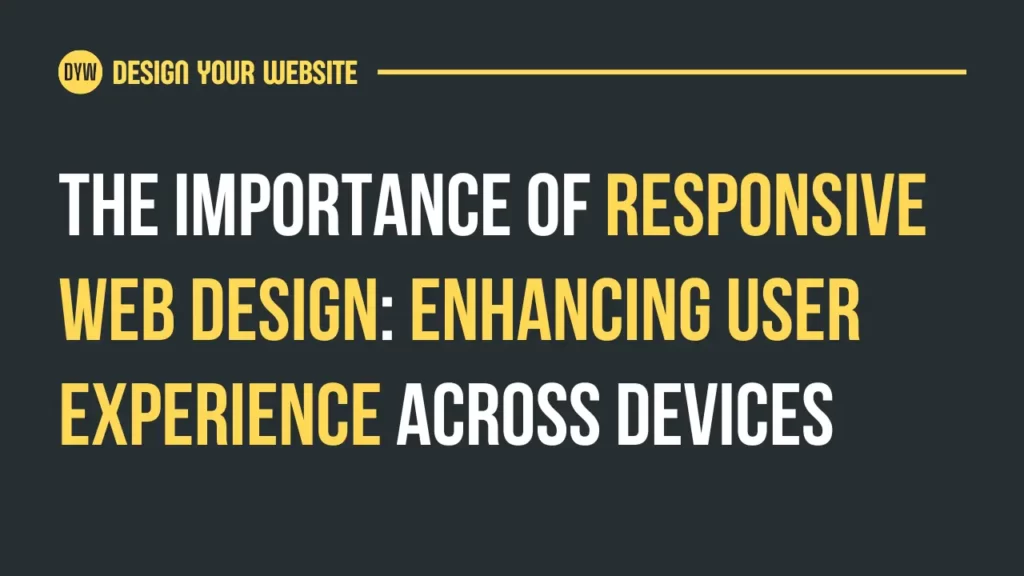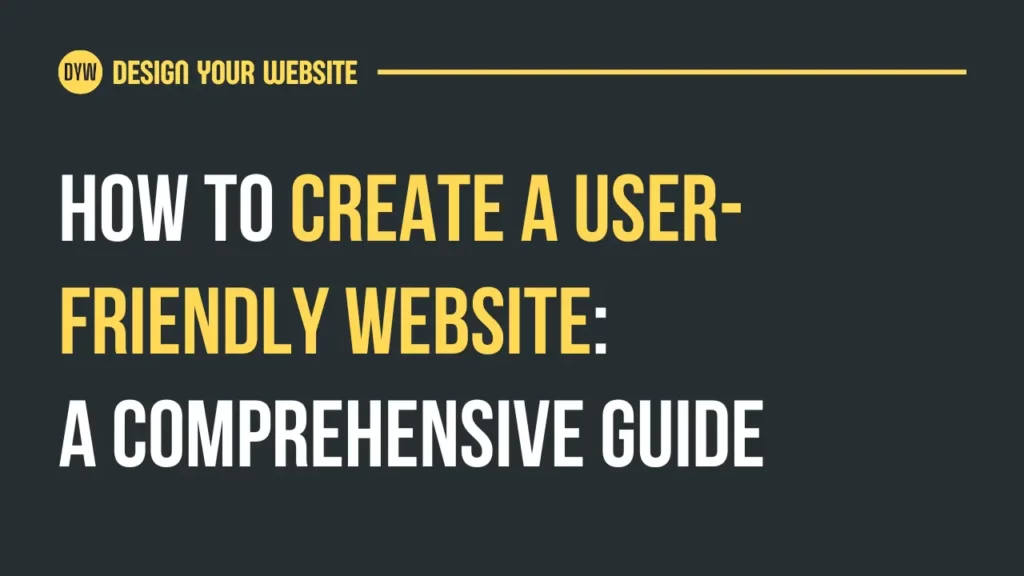Best Practices for Mobile Website Design
In today’s mobile-centric world, having a well-designed mobile website is essential to provide a seamless user experience. Mobile users have different needs and preferences compared to desktop users, making it crucial to optimize your website for mobile devices. In this blog post, we will delve into the best practices for mobile website design to help you create a user-friendly and visually appealing mobile experience.

1. Develop a Responsive Layout
A responsive layout ensures that your website adapts and displays correctly across different screen sizes and orientations. Use CSS media queries to adjust the layout, font sizes, and images accordingly. This approach provides a consistent user experience across devices.

2. Optimize Website Speed
Mobile users expect fast-loading websites. Optimize your website by minifying CSS and JavaScript files, leveraging browser caching, and compressing resources. Prioritize speed to keep visitors engaged and prevent them from bouncing to faster-loading alternatives.

3. Compress Images
Large image files can slow down your mobile website. Compress images without compromising quality to reduce file sizes. Use modern image formats like WebP, and consider lazy loading images to improve the initial page load performance.

4. Use HTML5 Instead of Adobe Flash
Adobe Flash is not supported on most mobile devices and can cause compatibility and performance issues. Use HTML5 technologies like CSS3, JavaScript, and HTML5 video and audio tags to provide interactive and multimedia experiences.

5. Avoid Pop-ups
Pop-ups can be frustrating and interrupt the user experience on mobile devices. If you need to display messages or prompts, consider using alternative methods, such as slide-ins, banners, or non-intrusive notifications.

6. Change Button Size and Placement
Make buttons and interactive elements larger and easier to tap on touchscreens. Ensure there is enough space between buttons to prevent accidental taps. Place important buttons within easy reach of the user’s thumb or index finger.

7. Use a Large and Readable Font
The text should be easily readable on mobile devices. Choose a legible font and adjust the size accordingly. Avoid using small or decorative fonts that may cause strain on the user’s eyes.

8. Space Out Links
Provide sufficient spacing between links and make them easily clickable. Users should be able to tap on links accurately without mistakenly tapping on neighboring elements.

9. Declutter Web Design
Simplify your mobile website design by removing unnecessary clutter. Limit the number of elements, minimize text, and prioritize key content. Embrace whitespace to create a clean and uncluttered appearance.

10. Remember, an Icon is Worth a Thousand (or, Okay, a Dozen) Words
Utilize icons effectively to convey information quickly and visually. Icons can enhance user understanding and make the mobile website more intuitive and user-friendly.

11. Don’t Go Overboard with Java
Avoid excessive use of JavaScript animations or effects that may slow down the website or cause compatibility issues. Use JavaScript judiciously to enhance user experience without compromising performance.

12. Make it Easy to Find Your Phone Number, Location, and Contact Info
Ensure that your phone number, address, and contact information are prominently displayed and easily accessible on your mobile website. Users should be able to find this information quickly, enabling easy contact or finding your physical location.

13. Test the Website on Mobile Devices Regularly
Regularly test your mobile website on a variety of devices and screen sizes to ensure it displays properly and functions as intended. Make adjustments if necessary to maintain a consistent and optimal user experience.

14. Think with Your Thumb (or Index Finger)
Consider how users interact with their mobile devices using their thumbs or index fingers. Position important elements, such as menus or navigation, within the natural reach of these fingers for easy access and navigation.

15. Keep Content Short and Sweet
Mobile users typically have shorter attention spans. Keep content concise and to the point. Use clear headings, bullet points, and short paragraphs to deliver information effectively and facilitate optimal readability.
By implementing these best practices, you can create a mobile-friendly website that offers a smooth and enjoyable user experience. Remember to regularly analyze user behavior, collect feedback, and stay updated with mobile design trends to further enhance your mobile website design efforts.
Frequently Asked Questions about Mobile Website Design
1. Why is it important to have a mobile-friendly website?
Having a mobile-friendly website is crucial because the majority of internet users access the web through mobile devices. A mobile-friendly website ensures a seamless user experience, helps reach a larger audience, and improves search engine visibility.
2. What is a responsive layout?
A responsive layout is a design approach that allows a website to adapt and display correctly on different devices and screen sizes. The layout adjusts dynamically, rearranging content, resizing images, and optimizing typography to provide an optimal viewing experience.
3. How can I optimize my mobile website’s speed?
To optimize your mobile website’s speed, you can minimize CSS and JavaScript files, leverage browser caching, use a content delivery network (CDN), compress images, and reduce server response time. These steps help ensure fast-loading pages and improve user experience.
4. Why should I avoid using Adobe Flash for mobile website design?
Adobe Flash is not supported on most mobile devices, leading to compatibility issues and slower performance. It’s best to use HTML5 technologies such as CSS3, JavaScript, and HTML5 video and audio tags for interactive and multimedia experiences that work across devices.
5. Are pop-ups recommended for mobile websites?
Pop-ups are generally not recommended for mobile websites because they can disrupt the user experience and frustrate users. Consider using alternative methods like slide-ins, banners, or non-intrusive notifications to display important messages or prompts.
6. How can I ensure my mobile website is easy to navigate with touchscreens?
To make your mobile website easy to navigate with touchscreens, use buttons that are large enough to tap with a finger, provide sufficient spacing between clickable elements, and position important elements within easy reach of the thumb or index finger.
7. What font should I use for optimal readability on mobile devices?
Choose a legible font for your mobile website that provides optimal readability on smaller screens. Sans-serif fonts like Arial, Helvetica, or Roboto are commonly used for mobile typography due to their clarity and simplicity.
8. How can I effectively use icons in mobile website design?
Icons can effectively convey information quickly and visually. Use icons that are easily recognizable and provide clear meaning. Group icons logically and consistently for intuitive navigation and avoid overusing them, as too many icons can cause confusion.
9. Why is it important to display contact information prominently on a mobile website?
Displaying contact information prominently on a mobile website makes it easy for users to find and contact your business. This improves user experience and encourages potential customers to reach out or visit your physical location.
10. What is the role of user testing in mobile website design?
User testing is crucial in mobile website design to ensure that your website functions correctly and provides an optimal user experience on various devices and screen sizes. Regular testing helps identify issues and areas for improvement to deliver a seamless mobile browsing experience.




